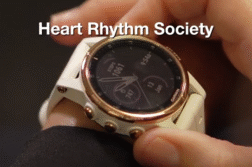DALLAS, Texas (Ivanhoe Newswire) — For years, older model, so-called legacy pacemakers were not compatible with MRIs because the metal in the pacemakers caused the magnetic resonance imaging devices to fail, lead tips to overheat, and caused discomfort in patients. Now, imaging experts have made adjustments so MRIs can be safe for more patients.
Twelve years ago, life-long runner Mike Unclebach was diagnosed with a heart blockage and got a pacemaker. Ten years later, his electro cardiologist told him the pacemaker indicated a problem. An MRI would help diagnose it, but MRIs were considered unsafe for older, legacy pacemakers. Doctors found one brave man …
“Somebody’s gotta be first,” Unclebach said.
Mike agreed to an MRI after new studies showed how the testing could be done safely by limiting the magnet strength, the MRI energy applied, and the duration of exposure. Turns out, Unclebach’s MRI showed an even more serious problem, a thickening of the muscle wall of the left ventricle, a condition called atypical hypertrophic cardiomyopathy.
“We can see it’s severely thickened. It’s about close to three centimeters or 30 millimeters in thickness. So this is abnormal,” explained Haojie Wang, MD Cardiologist, Medical Director of the Cardiovascular MRI Lab at Baylor Scott & White Health.
The pacemaker was removed and replaced with an implantable defibrillator that will shock Mike’s heart back to life if it suddenly stops. All made possible because of a safe MRI.
Said Dr. Wang, “We can see more we couldn’t see before with much higher resolution.”
Just two weeks out of surgery, Unclebach is working out again, and plans to climb a mountain.
“I’m going to get to go be me,” said Unclebach.
Dr. Wang says newer model pacemakers pose no known hazards in an MRI environment. Patients with older pacemakers should work closely with their doctors to determine if they need an MRI, and how it can be done safely.
Contributors to this news report include: Don Wall, Field Producer; Mark Montgomery, Videographer; Cyndy McGrath, Supervising Producer; Hayley Hudson, Assistant Producer; Roque Correa, Editor.
To receive a free weekly e-mail on Medical Breakthroughs from Ivanhoe, sign up at: http://www.ivanhoe.com/ftk
MEDICAL BREAKTHROUGHS
RESEARCH SUMMARY
TOPIC: MAKING MRI SAFE FOR PACEMAKERS
REPORT: MB #4509
BACKGROUND: A pacemaker monitors and treats dangerously slow heart rhythms (bradycardia). A pacemaker device contains a small battery-operated computer, which is typically implanted in the chest, and one or two leads, which are implanted in the heart and connected to the device. The pacemaker continuously monitors heart rhythm and delivers electrical energy to pace the heart if it’s beating too slowly. Pacemakers also store information about the heart. This allows the doctor to better evaluate the programmed therapy for heart rhythm and adjust the pacemaker settings if necessary. Just like any battery, a pacemaker battery will run out over time. Since the battery is permanently sealed inside the pacemaker, it can’t be replaced when its energy is depleted. If the battery runs out, the entire device will need to be replaced. The pacemaker’s battery life depends on the settings the doctor programs and how much therapy is received.
PACEMAKERS: Until recently, most devices were not FDA-approved for MRI. They had been considered risky because it was feared that the high-strength magnetic fields used for the scanning could disrupt a pacemaker’s or defibrillator’s circuits. Yet, when researchers reviewed 212 MRI examinations involving 178 patients with these nonapproved devices, they did not find a single problem with how they functioned. The researchers concluded that MRI is safe for someone with a device implanted after 2000, as long as the device is checked before and after the procedure and its pacing function is monitored during the scan. In the last seven years, the FDA has approved newer and more expensive devices that are designed to be safe for MRI; these are labeled “MRI conditional.” However, the researchers noted that you don’t need to replace your older device with an MRI-compatible model before getting a scan.
NEW TECHNOLOGY: There is a new pacemaker system on the market that may completely change the traditional relationship between these devices and MRIs; in fact, the challenge of finding alternate diagnostic methods and the risk of conducting the MRI may be obsolete in a few years. This new device, approved by the FDA, is the Revo MRI SureScan Pacing System. It was specifically engineered by the device maker for MRI safety and consists of the Medtronic Revo MRI SureScan pulse generator implanted with two CapSureFix MRI SureScan leads.
(Source: https://www.dicardiology.com/article/changing-relationship-between-mris-and-pacemakers)
FOR MORE INFORMATION ON THIS REPORT, PLEASE CONTACT:
Susan Hall, PR Baylor Scott & White
214-820-1817
If this story or any other Ivanhoe story has impacted your life or prompted you or someone you know to seek or change treatments, please let us know by contacting Marjorie Bekaert Thomas at mthomas@ivanhoe.com




